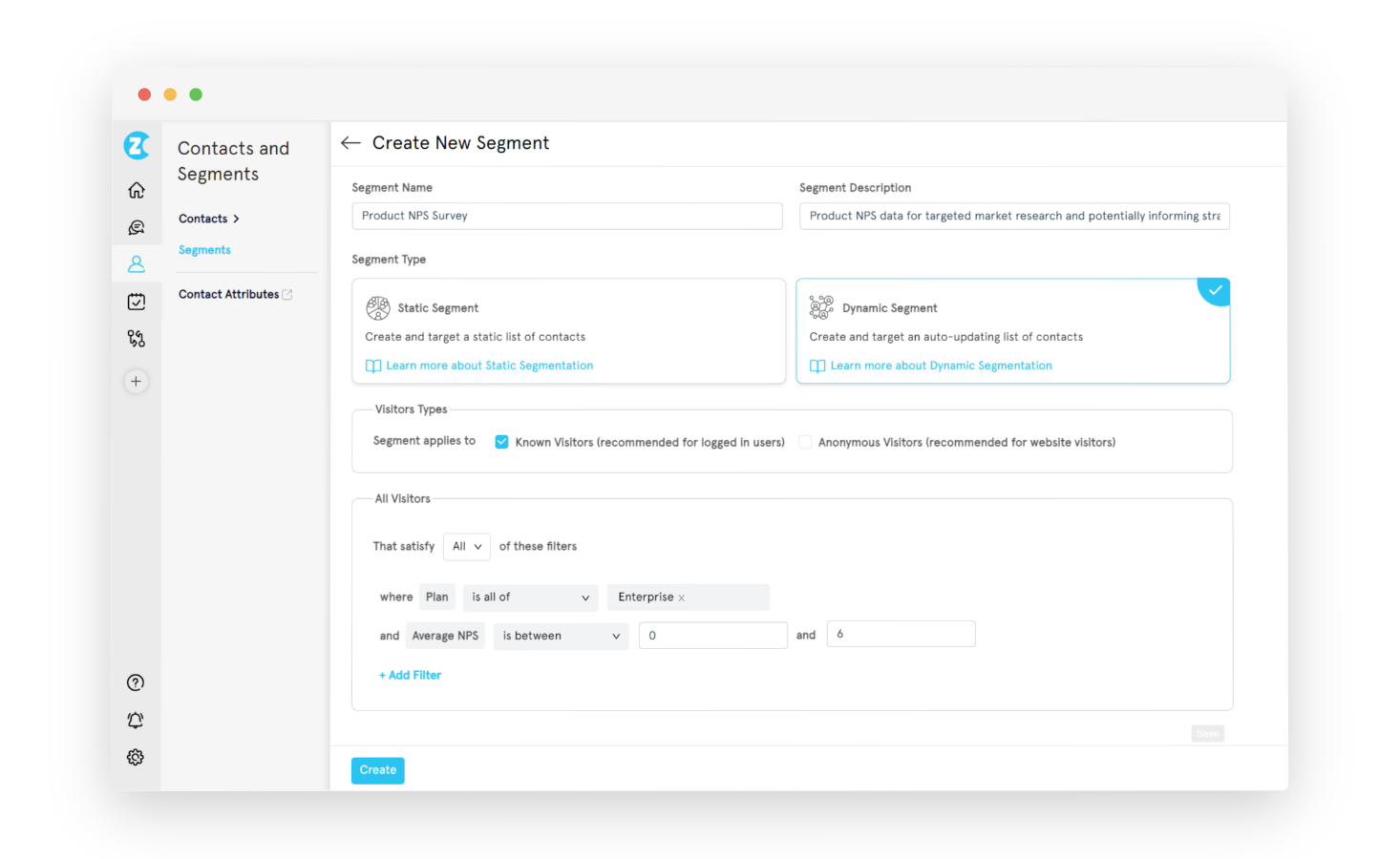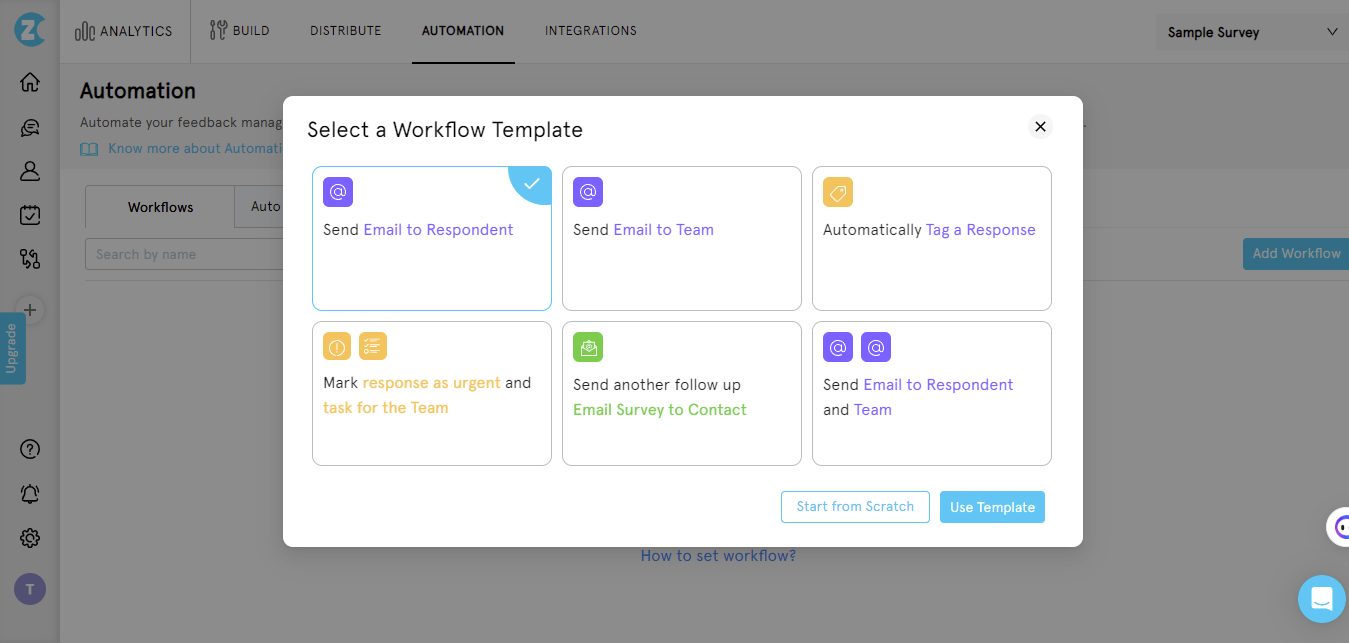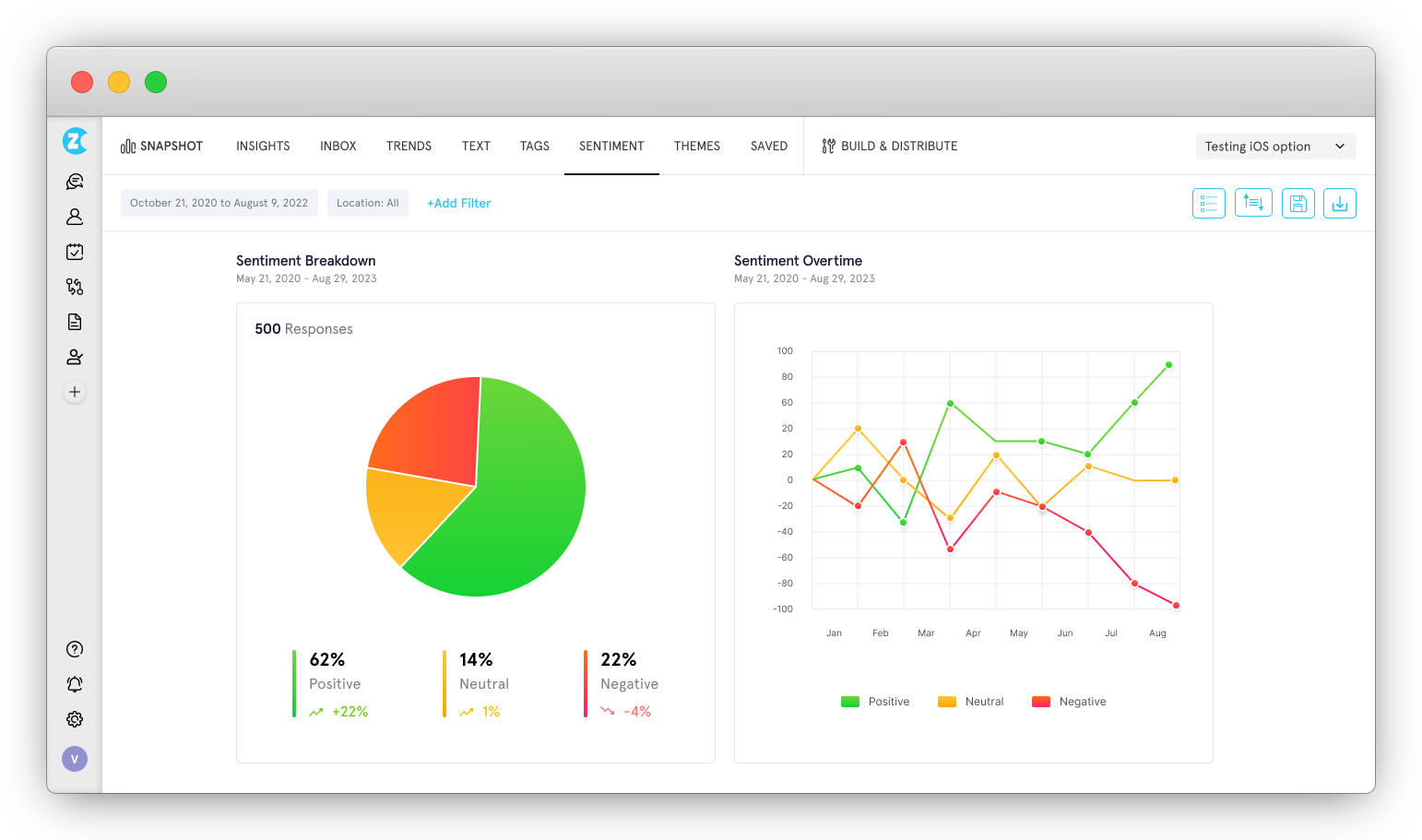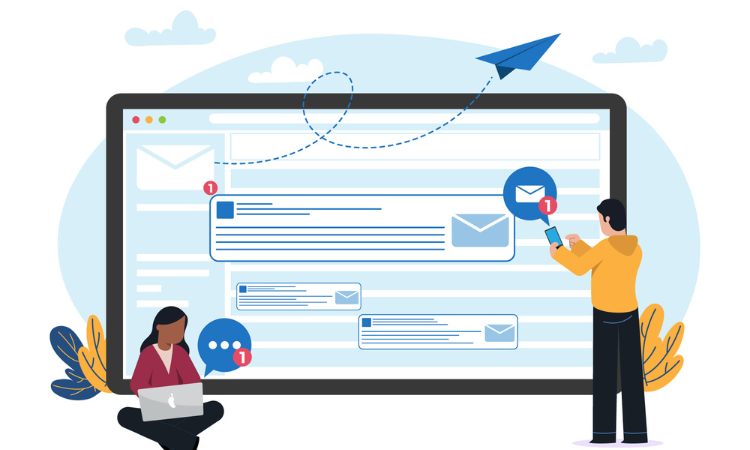Imagine it's a Black Friday weekend, your busiest online shopping period. Suddenly, your social media channels explode with complaints about slow website loading times and confusing checkout procedures. Customers are abandoning carts in droves, and your brand is trending for all the wrong reasons.
What if you could identify these issues before they escalated and turn those frustrated customers into brand loyalists who rave about your seamless online shopping experience?
That's the power of listening to detractors (unhappy customers) and taking action. By identifying these issues before they escalate, you can turn frustrated customers into brand loyalists who rave about your smooth online shopping experience.
Detractors may seem like a problem, but they're actually a valuable opportunity. Unresolved issues lead to lost sales and tarnished reputations. However, addressing their concerns can not only win them back but also amplify your brand as positive advocates as studies show that detractors are responsible for more than 80% of negative word of mouth which can have a significant impact on your business growth.
Consider high-end restaurant chains like Jones the Grocer, which actively listened to the needs of detractors and achieved a Net Promoter Score (NPS) of over 90%. By using NPS tools like Zonka Feedback, many such organizations are identifying the problem areas in their business and closing the feedback loop with detractors. This turns them into brand champions, boosting retention and sales.
In this article, we will look at some sure shot tips to deal with your detractors in such an effective way that they become promoters. Let's get started!
TL;DR
-
NPS detractors are customers who rate your brand poorly (0-6 on NPS surveys), indicating dissatisfaction with your offerings. They are potential sources of negative word-of-mouth and discourage future customers
-
Detractors are important for your enterprise as they provide unfiltered feedback, highlighting critical pain points and offer opportunities to boost retention rates by addressing them.
-
By implementing proactive check-ins, conducting regular quality audits, establishing dedicated response teams to detractors, and closing the feedback loop, you can turn detractors into loyal enthusiasts.
-
You can use NPS survey tool like Zonka Feedback to create and distribute surveys, identify detractors, and automate responses. Leverage AI insights to take action and close the feedback loop. Schedule a demo to explore its features to address detractor concerns promptly and effectively.
Measure Customer Loyalty with NPS ❤️
Use NPS surveys to identify detractors, reduce churn with AI insights and close the feedback loop with Zonka Feedback.

Who are NPS Detractors?
NPS detractors are customers who are dissatisfied with your brand's offerings, evidenced by low ratings (0-6) on NPS surveys. This dissatisfaction can manifest through negative reviews, reduced purchases, canceled subscriptions, and ultimately, switching to competitors.
Your brand is not what you tell your customers; it is what your customers tell others about it.
Rightly put forth by Scott Cook, co-founder of Intuit, the negative experiences of detractors can become your brand narrative unless addressed.
But here's the twist: Detractors, those seemingly unhappy customers, are actually a hidden weapon for large enterprises. They may not feel like it at first, but their feedback holds immense value. Let's look at why identifying detractors is important.
Why are Detractors Important for your Business Growth?
While it's nearly impossible to have all your customers always happy with your business, your detractors can cause a lot of harm to your business and no matter how less or more they may be in number, they should always be a priority. Here are some reasons why you must never ignore detractor feedback:
-
Unfiltered Feedback: Detractors are your unfiltered truth serum. Unlike NPS Passives, they provide a clear picture of what's NOT working. This honest customer feedback exposes pain points you might have missed, allowing you to fix crucial issues before they snowball into a bigger crisis.
-
Boost Retention Rates: Think of detractors as lost opportunities in disguise. By addressing their concerns promptly and effectively, you can turn them into loyal customers. Studies show companies that focus on detractors experience a 25% increase in customer retention – a game-changer for any large enterprise.
-
Identify Trends & Stay Ahead: Detractors often highlight recurring issues across specific departments or product lines. By analyzing detractor feedback, you can identify widespread trends before they become major problems. This proactive approach allows you to stay ahead of the curve and continuously improve your offerings.
-
Turn Negativity into Positive Advocacy: Imagine this: a detractor who once blasted your product online becomes a vocal advocate, raving about its improvements after your team addressed their concerns. That's the power of transforming negativity into positive brand advocacy. detractors, when handled correctly, can become your biggest brand champions.
-
Gain a Competitive Edge: In today's cutthroat market, even a slight edge over your competitors can be a goldmine. By actively listening to detractors and addressing their concerns, you can continuously refine your products and services, ensuring they stay ahead of the competition.

Identifying the Types of Detractors & How to Deal with Them?
Here's a breakdown of common detractor types and actionable insights to turn their negativity into positive growth for your business:
1. Newcomers (First-Time Customers)
Imagine a customer who just signed up for your complex enterprise software but encounters a confusing interface and unhelpful error messages. They're not just a detractor – they're a customer flight risk.
The Problem: New user experiences are often an afterthought, leading to frustration and churn. Traditional onboarding processes might not cater to diverse learning styles.
Solution: Implement proactive check-ins through automated emails or calls to ensure new customers are not facing issues from the start. Additionally, you can make:
-
Gamified Onboarding: Gamify the onboarding process with interactive tutorials, points systems, and rewards to keep new users engaged.
-
Microlearning Modules: Break down complex functionalities into bite-sized, interactive microlearning modules that cater to different learning styles (visual, auditory, kinesthetic).
-
"Buddy System" for New Customers: Pair new customers with existing, satisfied users who can offer peer-to-peer guidance and support.
Example: A large financial institution implements a gamified onboarding process for its mobile banking app. New users earn points for completing tasks, unlocking features, and watching short explainer videos. This approach increases user engagement and reduces support tickets from frustrated newbies.
2. Loyalists
These are long-term customers who experience a decline in quality or service, causing them to turn sour. They may feel neglected or taken for granted.
The Problem: As a large enterprise, you might sometimes fall into the trap of focusing on new customer acquisition, neglecting the needs of loyal customers. This can lead to a sense of betrayal and a decline in brand loyalty.
Solution: Conduct regular quality audits to ensure that the high standards expected by loyal customers are maintained consistently. You can implement:
-
"Voice of Customer" Program: Implement a voice of customer methodology that actively solicits feedback from loyal customers. This can be done through dedicated NPS survey, focus groups, or online forums.
-
"Surprise and Delight" Initiatives: Surprise loyal customers with unexpected perks – free upgrades, exclusive discounts, or personalized gifts. This shows them they're valued and appreciated.
-
Customer Relationship Management (CRM) Segmentation: Segment your customer base in your CRM system, tailoring communication and offers based on customer lifetime value and loyalty.
3. Disgruntled Promoters
These are former brand champions who switched sides due to significant negative experiences. They might feel ignored or unheard.
The Problem: Negative customer experience can spread like wildfire on social media, especially when voiced by a trusted brand advocate. Ignoring detractor complaints can damage your reputation and deter potential customers.
Solution: Implement a closed-loop feedback system where detractors receive a personalized response outlining the steps taken to address their concerns. Additionally, you can keep in check:
-
Social Media Monitoring & Engagement: Proactively monitor social media mentions and engage with disgruntled advocates. Offer a sincere apology and a clear plan of action to resolve their issue.
-
"Brand Ambassador Repair Program": Develop a program to re-engage former brand ambassadors who turned detractors. This might involve personalized communication, early access to new products, or co-creation opportunities.
Example: Consider a large tech company that receives a scathing online review from a disappointed influencer about a faulty product. They not only address the influencer's issue directly but also invite them to participate in a beta testing program for upcoming product updates. This shows a commitment to improvement and rekindles the influencer's positive relationship with the brand.
4. Professional Critics (Bloggers, Reviewers, Journalists)
These are industry influencers whose opinions can make or break a product launch. One bad review can significantly impact sales and brand perception.
The Problem: Ignoring professional critics can lead to negative press coverage and a damaged reputation within your industry.
Solution: Save your brand image in the market by reaching out to them, considering their insights, and resolving their concerns. You can do this by offering:
-
Early Product Access & Collaboration: Offer early access to new products or services to professional critics for their feedback. This allows them to provide valuable pre-launch insights and fosters a collaborative relationship.
-
Industry Influencer Events: Organize exclusive events for industry influencers, providing them with in-depth product demonstrations and the opportunity to network with company executives.
-
"Critic Response Team": Create a dedicated team to monitor and address concerns raised by professional critics. This team should be composed of individuals with strong communication and product knowledge, able to provide prompt and informative responses.

Actionable Strategies to Turn NPS Detractors into Promoters
An NPS detractor's voice is a valuable source of insight. Here are some unique strategies that you can implement to turn frowns from detractors upside down and unlock a wealth of positive brand advocacy.
1. Identifying Churn Groups for Early Intervention
Catching dissatisfaction early prevents churn and allows proactive intervention. It is often observed that large enterprises with complex customer journeys might miss early warning signs. What it means is that if you run a hospital that uses complex supply chain software, you can miss early signs of trouble.
Data on user frustration might be scattered across departments (support tickets, usage logs), and the focus on overall satisfaction scores might overlook issues in specific departments (e.g., slow loading times in the purchasing module). Without directly observing user interactions, you might miss these red flags until churn or negative word-of-mouth arises.
What would you do in such a scenario?
To prevent dissatisfied customers from churning and fostering long-term loyalty, you can:
-
Leverage Behavioral Analytics: Go beyond traditional NPS surveys. Utilize behavioral analytics tools to identify early signs of dissatisfaction. This could include low product usage, increased support tickets, or negative sentiment within internal communication channels.
-
Proactive Risk Scoring & Segmentation: Develop a "Detractor Risk Score" based on historical data and behavioral patterns. Use advanced segmentation to identify common characteristics among detractors. Analyze demographics, purchase history, and interaction patterns to pinpoint at-risk groups.
-
"Save the Sale" Strategy for Existing Customers: For existing enterprise customers expressing dissatisfaction, implement a "Save the Sale" strategy. This involves dedicated customer success managers proactively reaching out to understand their concerns and offer personalized solutions.
-
Sentiment Analysis: Implement sentiment analysis to understand the emotions behind negative feedback. This can help you identify underlying issues affecting customer satisfaction.
2. Closed-Loop CX Practices to Rebuild the Trust
Detractors often feel their concerns fall on deaf ears. Closed-loop practices like dedicated support channels and immediate responses show the company takes its feedback seriously. This acknowledgment validates their experience and opens the door to addressing their issues.
By going beyond apologies and actually working to fix the problem, you can demonstrate a genuine commitment to improvement and are actively working to prevent similar issues in the future.
Imagine a large retail chain receiving negative feedback from a customer who had a frustrating online shopping experience. The customer might feel unheard if the complaint goes unanswered or results in generic responses. This reinforces their dissatisfaction and damages trust.
To handle such a situation, you can implement:
-
Dedicated "Detractor Support Channels": Establish dedicated support channels (e.g., VIP hotlines, online forums) specifically for detractor feedback. In our mentioned example scenario, the retailer could set up a dedicated email address or phone line for customers with negative online shopping experiences. This allows them to bypass general customer service and connect directly with someone who can address their specific concerns.
-
Immediate Response: Establish a system for immediate response to negative feedback. Automated alerts can notify your team in real-time, ensuring prompt action, and would let the customers know their complaint is heard and someone will be in touch shortly.
-
"Root Cause Analysis" Workshops: Organize collaborative workshops with detractors to explore the root cause of their dissatisfaction. In the example, the retailer could offer the customer the opportunity to participate in a short online survey or phone call to explore the root cause of their frustration (e.g., confusing checkout process, unclear product descriptions). This would facilitate an environment of open communication and help develop solutions that address their specific needs.
-
Personalized Action Plans with Clear Timelines: Don't offer generic solutions. Develop personalized action plans for each detractor, outlining the specific steps you'll take to address their concerns. Set clear timelines and keep them informed of progress. The retailer can include a follow-up email with a discount code for their next purchase, a call from a customer service representative to walk them through the checkout process, or website improvements based on their feedback (e.g., clearer product information).
3. Leveraging Technology for Personalized Engagement
As an enterprise that deals with a vast number of customers with diverse needs and pain points, manually personalizing the detractor journey for each customer would be incredibly time-consuming and resource-intensive.
Thanks to advanced NPS software tools in the market, you can leverage data from various sources (NPS surveys, open-ended feedback, support tickets, usage logs) to gain deeper insights into individual detractor experiences. This data can then be used to personalize outreach and offer targeted solutions and prevent customer churn.
For instance, consider a large company like Adobe using these technologies with its Creative Cloud suite. A graphic designer might be experiencing difficulties with a new update to Photoshop, leading to frustration and potentially stopping their workflow. In such a scenario, Adobe can identify a potential detractor and optimize customer journey by:
-
In-Product Detractor Identification: Adobe's Creative Cloud could utilize sentiment analysis tools to monitor user behavior within Photoshop. A spike in error messages, abandoned edits, or negative comments on social media channels integrated with the platform might flag the designer as a potential detractor.
-
Targeted Content & Resource Recommendations: Based on this data, Photoshop could automatically recommend relevant content. This might include a pop-up notification showcasing a recently uploaded video tutorial on the new update's features or a link to a knowledge base article addressing common troubleshooting steps.
-
NPS Pulse Surveys & Real-Time Feedback: After the designer interacts with the recommended resources, a brief NPS pulse survey might appear within the software. This in-context survey allows Adobe to gauge the designer's satisfaction in real-time and determine if the resources addressed their concerns.
-
Automation: If the designer remains unsatisfied or the NPS score is low, an automated email could be triggered offering personalized support. This email might connect them with a live chat option with an Adobe specialist or provide a scheduling link for a dedicated consultation to address their specific challenges with the update.
This personalized approach increases the chance of resolving the designer's frustration quickly, preventing churn, and potentially turning them into a promoter who advocates for the latest updates within the design community.
4. From Detractor to Promoter: Cultivating Advocacy & Long-Term Value
You would be surprised to know that promoters are 57% more likely to spend more with a brand they are loyal to. Imagine the impact if your unhappy customers, those who might normally spread negativity, became your most vocal advocates. By addressing their concerns and transforming them into promoters, you unlock a powerful marketing force that strengthens customer loyalty in a genuine way.
Promoters are vocal advocates who recommend your brand to others, creating a ripple effect of positive word-of-mouth that builds trust and credibility far more effectively than traditional advertising. Studies show that 77% of consumers say they've been influenced by a friend or family member's recommendation, highlighting the immense power of customer advocacy.
Here's how you can cultivate this loyal promoter base:
-
Showcase Detractor Success Stories: Share the journeys of former detractors who became promoters. Publish customer testimonials and case studies that highlight how you listened to their concerns, addressed their issues, and ultimately improved their experience. These stories demonstrate your commitment to customer satisfaction and inspire others with the potential for positive change.
-
Empower Customer Advisory Boards: Invite former detractors to participate in "Customer Advisory Boards." Their unique perspective provides valuable insights on product development, customer service improvements, and industry trends. By actively incorporating their feedback, you demonstrate that their voices matter and ensure your offerings remain relevant and address their evolving needs.
-
Recognize "Net Promoter Champions": Identify and reward customer success managers (CSMs) who excel at turning detractors into promoters. This "Net Promoter Champion" program incentivizes a customer-centric culture within your organization. It celebrates the power of successful turnaround stories and motivates CSMs to go the extra mile in resolving customer issues and fostering long-term loyalty.

5. Responding to Detractors
Promptly acknowledging detractor feedback shows you value their input. This demonstrates you take concerns seriously and are ready to address them. When topped with a sincere apology, you validate their issues and frustration, showing empathy and understanding. This can significantly improve their perception of your brand.
Many companies, like Airbnb, prioritize excellent customer service. Consider a frustrated Airbnb host who left a negative review about a confusing payout process. The company might promptly respond, acknowledging their frustration and apologizing. They could assign a dedicated representative to guide the host through the process, troubleshoot the issue, and provide clear solutions.
Additionally, they might offer a courtesy gesture, such as a complimentary stay credit, to compensate for the trouble. Impressed by the personalized attention and quick resolution, the host might not only remove the negative review but also leave a positive one, praising the company's exceptional service.
That being said, here's how you should respond to detractors so that their negative experience is changed into a positive one and their happiness becomes your marketing tool!
-
Acknowledge Promptly: Respond to detractor feedback within 24 hours whenever possible. This demonstrates responsiveness and a willingness to listen.
-
Genuine Apology: Personalize your apology by acknowledging the specific issues mentioned. Avoid generic responses and show empathy for their situation.
-
Offer Clear Solutions: Present actionable steps you'll take to address their concerns. Be transparent about the solutions and avoid vague promises.
-
Set a Timeline: Let them know when they can expect to see improvements. This builds trust and shows a commitment to resolving the issue within a reasonable timeframe.
-
Follow-Up: After implementing solutions, follow up with the detractor to gauge their satisfaction. This shows you care about their experience and their continued business.
-
Continuous Engagement: Stay connected with the detractor and keep them informed about improvements made based on their feedback. This demonstrates your commitment to ongoing customer satisfaction and can foster a long-term positive relationship.
How Does Zonka Feedback Help Transform Detractors into Promoters?
By using an effective NPS software like Zonka Feedback that offers a range of premium features designed to help you effectively manage and respond to detractors, you can transform them into loyal promoters. This would not only improve customer satisfaction but also fuel your business growth through positive word-of-mouth. Let's see how each feature contributes:
a. NPS Automation
Manually following up with every detractor can be time-consuming and inefficient. Zonka Feedback's NPS automation ensures timely and consistent communication. You can set up automated triggers to send NPS follow-up emails, surveys, or text messages shortly after a customer interaction, especially when a low score (indicating a detractor) is received.
For example, if your clothing company receives a low NPS score from a customer who had a poor online checkout experience, Zonka Feedback's automation can trigger an NPS follow-up email within minutes of the purchase. This email could express concern, apologize for the inconvenience, and offer the customer a chance to elaborate on their experience..png?width=1549&height=1079&name=Workflows%20and%20Automation%20(1).png)
b. Customizable Workflows
Detractors often have different reasons for dissatisfaction. Zonka Feedback's customizable workflows allow you to create targeted action plans based on the specific nature of the feedback. These workflows can automate a series of actions triggered by a detractor's response.
For example, if you are in the BFSI industry, you can set up a dedicated workflow for detractors who had a negative experience applying for a loan. The workflow could be designed to:
-
Automatically send an email with an apology, acknowledging the customer's frustration.
-
Connect them with a dedicated loan specialist who can address their specific concerns.
-
Offer expedited processing on their application to demonstrate a commitment to resolving the issue.
c. Advanced Segmentation
Not all detractors are created equal. Zonka Feedback's advanced segmentation capabilities allow you to group detractors based on various criteria such as demographics, product/service used, or specific touchpoints in the customer journey. This helps you identify patterns and common pain points within different detractor segments and create targeted action plans for different groups of detractors.
For instance, if you run a telecom company, you might segment feedback from customers aged 18-25 who had a negative experience with their mobile data plan. This allows you to understand the specific needs and frustrations of this particular detractor segment.
d. AI-Powered Sentiment Analysis
Beyond the raw feedback text, understanding the emotional tone behind a detractor's words is crucial. Zonka Feedback's AI-powered sentiment analysis goes beyond keywords to analyze the emotional language used by detractors. It dives deep into open-ended detractor responses to the NPS question, meticulously dissecting them based on four key aspects: Emotions, Intent, Entity, and Urgency.
This helps you identify underlying frustrations and prioritize solutions that address the most emotionally charged pain points.
Let's understand this with an example. Imagine a customer leaves a low NPS score on your airline survey and provides an open-ended comment: "This flight was a nightmare! My luggage was lost, the in-flight entertainment system malfunctioned, and the service was apathetic."
Zonka Feedback's AI would analyze this response as follows:
-
Emotions: Frustration, anger
-
Intent: Seeking resolution for lost luggage and a solution for the entertainment system
-
Entity: Lost luggage, in-flight entertainment system, customer service
-
Urgency: High (lost luggage necessitates immediate action)
This deep dive empowers you to take targeted actions. You can prioritize locating the lost luggage, offer compensation for the entertainment inconvenience, and potentially reach out to the customer with a sincere apology and a service recovery plan. By addressing these specific concerns promptly and empathetically, you can potentially turn this detractor into a satisfied customer who appreciates the quick resolution.
e. Custom NPS Surveys
While the NPS score gives quantitative feedback, adding an open-ended question to the detractor score can help you unlock deeper detractor insights, leading to tangible business value. Through Zonka Feedback's custom NPS surveys that digs deeper into the reason for detractor score, you can:
-
Target the Root Cause: Generic NPS surveys often leave you guessing about the "why" behind a low score. Zonka Feedback empowers you to design custom surveys with targeted open-ended questions specifically for detractors. These questions are shown based on the customer's choice of score and go beyond basic "Why Not?" options, prompting them to pinpoint the specific reasons for dissatisfaction.
-
Data-Driven Decision Making: Custom NPS surveys provide you with concrete evidence, not just assumptions, about what aspects of your service are causing dissatisfaction among large customer segments. This allows you to prioritize resource allocation and development efforts based on real customer needs, leading to more strategic business decisions.
-
Focus Efforts for Maximum ROI: Large enterprises have limited resources. Zonka Feedback's custom NPS surveys with AI-powered analysis help you focus your improvement efforts on the areas that will yield the most significant return on investment (ROI). By addressing the root causes of detractor dissatisfaction, you can optimize processes, improve customer experiences, and ultimately drive higher NPS scores.

f. Real-Time Alerts
Timely responses to customer concerns are crucial for minimizing damage and preventing churn. Zonka Feedback's real-time alerts empower you to address detractor issues promptly, leading to improved customer satisfaction and reduced customer loss. Here's how:
-
Immediate Intervention: If a customer leaves a low NPS score with scathing comments about a damaged item and poor return process, Zonka Feedback instantly sends a real-time alert to the customer service team.
-
Faster Resolution: The team can immediately reach out, express concern, and initiate the return process, demonstrating a proactive approach and mitigating further frustration.
-
Reduced Customer Churn: By addressing detractor concerns quickly and efficiently, you can prevent them from feeling unheard or neglected. This reduces the likelihood of them abandoning your brand and potentially seeking alternatives.

g. Closing the Feedback Loop
By tracking the progress of feedback resolution and following up with detractors to ensure their issues are fully resolved, Zonka Feedback helps you demonstrate your commitment to customer satisfaction and turn your detractor's negative experience into a positive one. Here's how:
-
Personalized Follow-Up: Within a few seconds, your detractors would receive a personalized email acknowledging their feedback.
-
Actionable Insights: Zonka Feedback's AI analyzes your comments beyond just emotions. It uncovers the detractor's hidden frustrations that they might not have explicitly mentioned.
-
Real Progress Updates: Its real-time reports track detractor feedback trends. If, for example, a detractor mentions limited product options, Zonka Feedback will track how many others share that concern. This data helps you prioritize expanding your selection and bring necessary changes.
-
Transparency Throughout: With Zonka Feedback, you can keep your detractors informed. You can send a follow-up email to them outlining any actions that you are taking based on their feedback, so they can see the progress you are making to address their specific concerns.

Conclusion
Detractors are not just unhappy customers; they are a goldmine of insights waiting to be tapped. Add a line here. By actively listening to their concerns and utilizing online survey software, you can turn potential churn into opportunities for growth and improvement, ultimately building a stronger customer relationships.
Zonka Feedback's suite of features—NPS automation, customizable workflows, advanced segmentation, AI-powered sentiment analysis, custom Net Promoter Score surveys, real-time alerts, and effective feedback loop closure—empowers you to address detractor concerns promptly and effectively. With these capabilities, you can transform negative feedback into constructive insights that drive positive change and elevate the overall customer experience and loyalty.
Schedule a demo with our team to transform detractors into loyal brand advocates, fueling sustainable growth for your business!













